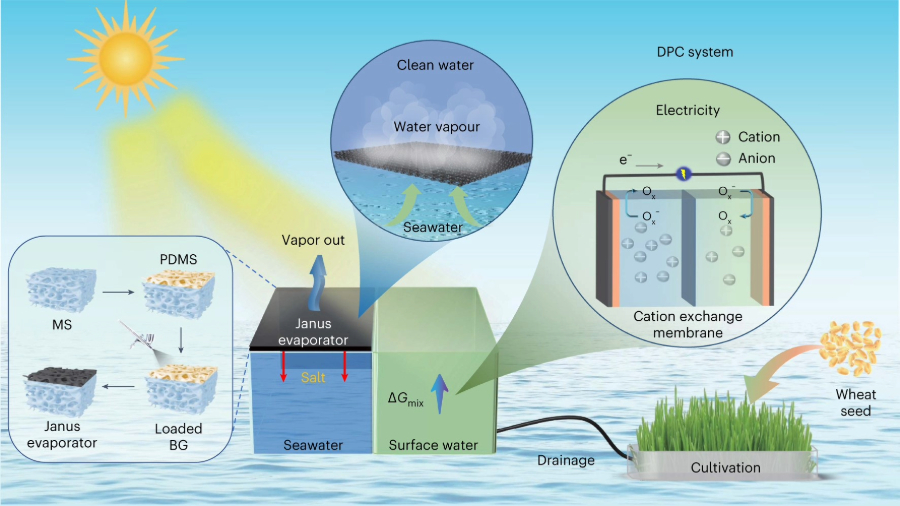How Nanotechnology is Revolutionizing Water Desalination
As the specter of water scarcity looms large, the world desperately seeks innovative solutions to unlock clean, freshwater resources. While conventional desalination methods play a crucial role, they often grapple with limitations like high energy consumption, membrane fouling, and limited selectivity. Enter the realm of nanotechnology, where manipulating matter at the atomic and molecular level promises transformative advancements in water treatment, particularly in desalination. This blog delves into the exciting world of nano-desalination, exploring its profound impact, emerging applications, and potential challenges.
Unveiling the Magic: Tailoring Membranes for Desalination Excellence
The heart of most desalination systems lies in their membranes, selectively allowing water molecules to pass while rejecting dissolved salts. Nanotechnology offers a treasure trove of tools to enhance these membranes, creating a revolution in desalination efficiency.
Nanoporous Wonders: Imagine membranes riddled with minuscule, precisely engineered pores capable of discriminating between water and salt on a molecular level. Graphene oxide, a single-atom-thick layer of carbon, holds immense potential. Its ultra-thin structure allows for rapid water flow while effectively sieving out salt ions. Research at MIT demonstrates the development of high-flux graphene oxide membranes with unparalleled desalination performance.
Carbon Nanotubes: Strength and Selectivity: Imagine microscopic straws with exceptional strength and tunable properties. Carbon nanotubes (CNTs) fit the bill perfectly. Their unique tubular structure can be tailored to selectively allow water molecules while rejecting larger salt ions. Researchers have developed CNT-based membranes with improved water permeability and salt rejection compared to conventional options.
Beyond Graphene and CNTs: The nanomaterial toolbox is vast, offering endless possibilities for membrane innovation. Metal-organic frameworks (MOFs), highly tunable porous structures, are being explored for their potential to create energy-efficient desalination membranes. Additionally, researchers are investigating nanoparticles like zeolites and silver for their ability to remove contaminants alongside salt.
These are just a few examples of how nanotechnology is transforming desalination membranes. Their enhanced performance translates to several benefits:
Reduced Energy Consumption: More efficient water passage through membranes translates to lower energy requirements, making desalination more sustainable and environmentally friendly.
Improved Water Quality: Tailored pores can effectively reject not only salt but also other contaminants, leading to higher-quality desalinated water.
Reduced Fouling: The bane of conventional membranes, fouling by organic matter and microorganisms, can be significantly reduced thanks to the antifouling properties of certain nanomaterials.
Beyond Membranes: Nanotechnology’s Diverse Arsenal
While membranes remain the workhorses of desalination, nanotechnology’s impact extends far beyond them.
Nano adsorbents: Tiny Titans of Contaminant Removal: Imagine microscopic sponges with an insatiable appetite for impurities. Nano adsorbents, like activated carbon nanoparticles and metal oxides, act as efficient sponges, capturing contaminants like heavy metals, organic pollutants, and even bacteria from water. This additional purification step ensures the desalinated water meets rigorous quality standards.
Nano-catalysts: Powering Desalination with Alternative Energy: Conventional desalination often relies on energy-intensive processes. Nano-catalysts, like nanoparticles of titanium dioxide, offer exciting possibilities for utilizing renewable energy sources like sunlight to drive desalination reactions. This not only reduces reliance on fossil fuels but also paves the way for sustainable desalination solutions.
Nanosensors: Guardians of Water Quality: Tiny sentinels embedded in desalination systems, nanosensors can continuously monitor water quality in real time, detecting even minute changes in salt concentration, contaminant levels, or microbial activity. This allows for immediate corrective action, ensuring consistent water quality and preventing system failures.
These diverse applications showcase the immense potential of nanotechnology to revolutionize desalination, making it more efficient, sustainable, and adaptable to varying needs.
Navigating the Nano World: Challenges and Considerations
While the potential of nanotechnology in desalination is undeniable, we must acknowledge the challenges and considerations that accompany its use.
Scaling Up Nanotechnology: Moving from lab-scale discoveries to real-world implementation requires addressing challenges like cost-effective production, membrane durability, and efficient integration into existing desalination infrastructure.
Environmental and Health Concerns: As with any emerging technology, responsible development and regulation are crucial. Potential environmental concerns associated with nanomaterial release and potential health risks need thorough investigation and mitigation strategies.
Public Perception and Ethical Considerations: Open communication and education are essential to address public concerns surrounding nanotechnology and ensure its ethical development and application in desalination.
A Brighter Future Beckons: Advancing Towards Sustainable Water Solutions
The impact of nanotechnology on desalination goes beyond technical advancements. It fosters hope for a future where clean water is accessible to all. By addressing the challenges and ensuring responsible development, we can harness the power of nano.
Source
- https://www.thehindubusinessline.com/business-tech/powering-desalination/article67423509.ece
- https://www.nature.com/articles/s44221-023-00118-0

